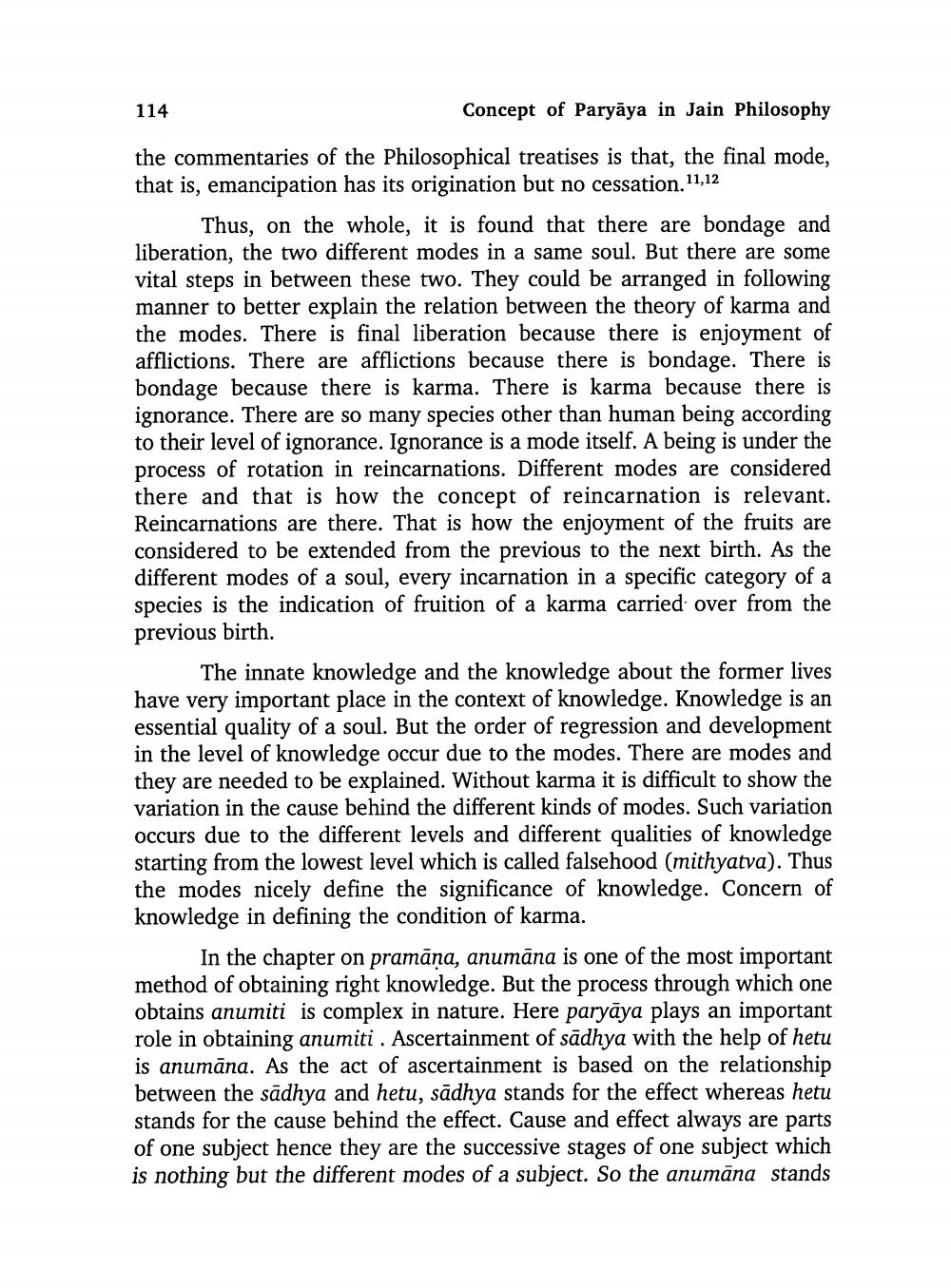________________ 114 Concept of Paryaya in Jain Philosophy the commentaries of the Philosophical treatises is that, the final mode, that is, emancipation has its origination but no cessation. 11,12 Thus, on the whole, it is found that there are bondage and liberation, the two different modes in a same soul. But there are some vital steps in between these two. They could be arranged in following manner to better explain the relation between the theory of karma and the modes. There is final liberation because there is enjoyment of afflictions. There are afflictions because there is bondage. There is bondage because there is karma. There is karma because there is ignorance. There are so many species other than human being according to their level of ignorance. Ignorance is a mode itself. A being is under the process of rotation in reincarnations. Different modes are considered there and that is how the concept of reincarnation is relevant. Reincarnations are there. That is how the enjoyment of the fruits are considered to be extended from the previous to the next birth. As the different modes of a soul, every incarnation in a specific category of a species is the indication of fruition of a karma carried over from the previous birth. The innate knowledge and the knowledge about the former lives have very important place in the context of knowledge. Knowledge is an essential quality of a soul. But the order of regression and development in the level of knowledge occur due to the modes. There are modes and they are needed to be explained. Without karma it is difficult to show the variation in the cause behind the different kinds of modes. Such variation occurs due to the different levels and different qualities of knowledge starting from the lowest level which is called falsehood (mithyatva). Thus the modes nicely define the significance of knowledge. Concern of knowledge in defining the condition of karma. In the chapter on pramana, anumana is one of the most important method of obtaining right knowledge. But the process through which one obtains anumiti is complex in nature. Here paryaya plays an important role in obtaining anumiti . Ascertainment of sadhya with the help of hetu is anumana. As the act of ascertainment is based on the relationship between the sadhya and hetu, sadhya stands for the effect whereas hetu stands for the cause behind the effect. Cause and effect always are parts of one subject hence they are the successive stages of one subject which is nothing but the different modes of a subject. So the anumana stands




